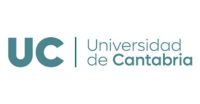The IDIVAL-UC and CIBER-BBN Photonic Engineering Research Group has demonstrated a fiber optic laser light source that, when integrated into a suitable microscope, allows CARS (Coherent Anti-Stokes Raman Scattering Microscopy) spectroscopy to be performed. that enables a new way of doing “photonic biopsies” in quasi-real time both in the laboratory and in clinical events.
The results have been the result of the work that has led to the doctoral thesis of Iñaki Aporta Litago under the co-direction of José Miguel López Higuera and María Angeles Quintela Incera. The developed technology has been protected by a patent, and is in the process of being strengthened to be transferred for commercial exploitation.

Consistent Raman Anti-Stokes Light Scattering (CARS) is a non-destructive technique that requires no “tinting” of the sample and enables advanced, high-contrast, precision analysis and imaging of biological tissues and chemical samples. It allows to obtain representative images of its molecular and morphological composition of both soft and hard tissues. CARS provides valuable information on species that are very abundant in living things, such as lipids, proteins, DNA and water. CARS has been used to monitor growth and lipid distribution in a wide variety of cell types and microorganisms, to visualize the morphological changes induced in myelin sheaths in the spinal cord, and to map lipid deposits in atherosclerotic lesions. Likewise, it has been shown that by CARS the margins between normal and pathological tissue can be obtained based on the biochemical footprint of the spectra in bones, epithelial and muscular tissue, nervous tissues, lung, breast and skin tissues, among others.
A CARS system is made up of three large modules: the tunable laser source, the optical-mechanical and display module, and the software for controlling, processing and presenting information, the key module of the instrument being the laser source for technical and economic reasons.
By means of two coherent and synchronized laser beams the target sample is excited. Its molecules vibrate at specific frequencies and scatter (with great efficiency) the photons, forming the CARS signal from which high-contrast, high-resolution molecular images are obtained in two and three dimensions.
Each type of molecule offers specific modes of vibration, and its frequency is representative of it, which allows it to be identified. By modifying the difference in frequencies between the two laser beams (tunable source), different types of molecules can be identified in the target sample.
As a minimum light intensity is required for a CARS signal to originate from a sample, using low intensity lasers and focusing them properly with objectives (lenses), it can be achieved that the aforementioned condition is only achieved in a very small volume (micrometer) located in the focus of the lens (focal volume). This makes it possible to obtain images in two and three dimensions on the surface and in the volume of the sample under study.
The intensity of the CARS light (number of photons) is representative of the "quantity" of the mentioned molecules in the sample, therefore, by means of the measurement of said intensity, their molecular density is determined. All this, in a non-destructive way (without damaging the samples), therefore, CARS spectroscopy can be used both in cells and biological tissues "in vitro" (dead tissues) and "in vivo" (living tissues).
To date, most sources for CARS have been made by synchronizing two pulsed lasers (one with a fixed frequency and the other with a variable frequency), resulting in complex, bulky, not very compact and very expensive assemblies, which prevents this technology, is popularized or used on a large scale. The CARS source demonstrated in photonic crystal fiber technology by the researchers of the group, in addition to offering the two high-quality laser beams at the output of an optical fiber, is small, very compact, more reliable, much easier to integrate in the opto-mechanical module and much cheaper. This will impact, very significantly, on the manufacture of more advanced CARS systems that reduce disadvantages and at significantly lower costs than their predecessors, which will undoubtedly facilitate their massive use in the chemical and biomedical sectors, among others.
Due to the high viability of being exploited commercially has been protected by patent. The Valencian company FYLA Láseres SA has shown its interest in manufacturing specific laser sources for CARS based on the aforementioned technology once it is strengthened. For this, it is waiting to receive funding from the Innovative Companies Association (AEI) that will allow the joint FULCARS project to be carried out, culminating in a prototype of a reliable, robust laser source that companies specialized in optical microscopy are interested in incorporating their new generation advanced CARS systems. With this, it is proposed to complete a model process of transferring the results arising in the laboratories of an academic institution to the business sector for commercial exploitation.





















